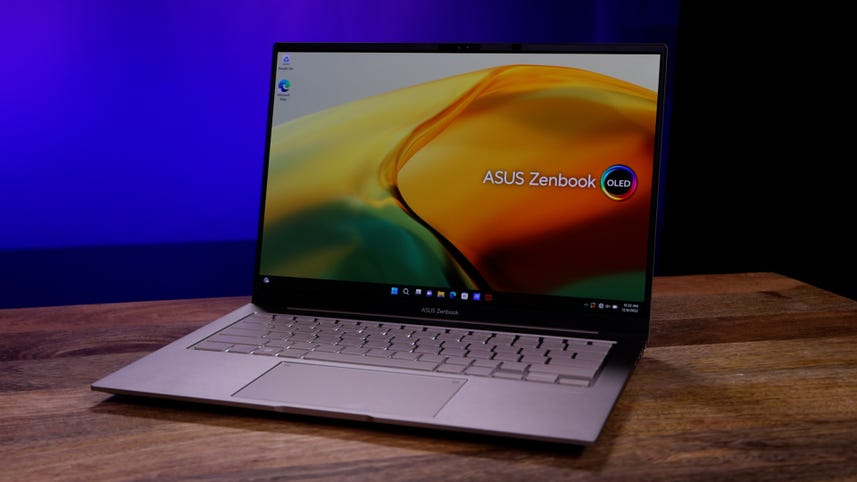
Speaker 1: Once again, Asus brings, its a game to c e s. There are the usual refreshes, but scattered among them are some particularly notable new updates. Acer added a laptop with a spatial lab's glasses, free 3D screen several years ago for its concept D mobile workstation line. And now ASUS is catching up with its own 3D panel. Aus says O LED's high contrast and fast pixel response time promises less crosstalk and ghosting. In other words, you get [00:00:30] visibly CRISPR 3D rendering when compared to the I P S panels used by asr. It's designed to work with all common 3D formats.
Speaker 1: The panel itself is a 3.2 K, 120 hertz model. ASUS has been using for some of its current model notebooks, but the 3D is done by a bonding, a micro lens layer to it. That's a lens for each pixel in the panel. And then they combine it with eye tracking so it knows how to [00:01:00] orient the object. In the early model, we got a chance to see the eye tracking didn't work quite as smoothly as it needs to. It was taking too long to lock, but Asus doesn't expect to release it until at least the second quarter of 2023. They're also working on the ability to track multiple viewers. The display will be available on the company's pro art studio book mobile workstation, but you'll also be able to add it as an option for the consumer creator focused vivo book Pro. It'll cost you an extra [00:01:30] 500 bucks.
Speaker 1: The Zen Book 14 x is getting a slightly bigger screen, and the single screen Zen Book Pro 14 will gain a 14 and a half inch, 120 Hertz, 1440 P Ola display. Because you know, smaller bezzles, A Zen book will also debut ASO's new coding process, which uses plasma ization. The company says it's more expensive, but better for the environment. On the inside, it's Big Brother. The 16 X is a bit different as well. ASOS worked with Intel on [00:02:00] a custom CPU package for the new mobile core I nine, which integrates the memory that makes it smaller and leaves more space for the gpu, and ostensibly enables the CPU to hit higher clock speeds. More space for the GPU can mean better cooling too, which in turn allows for more powerful chips or being able to run a given chip at a faster speed. Some of its laptops will also get an updated antimicrobial coating called Wait for It Antimicrobial Plus, which [00:02:30] essentially has an increased density of ionic silver, the particles which do the dirty work and ASUS plans to bring Olet options down to its vivo book.
Speaker 1: Go Line. Samsung's LED panels, which predominate in laptop screens are designed with blue light suppression baked right in. And I've seen manufacturers find novel ways to show the effectiveness of blue light blocking. ASISs decide to go with a custom created band pass filter. Brighter areas when viewed through [00:03:00] the filter are the regions with more blue light getting through. You'll also see the companies dial in one form or another, expanded to more laptops and with increased programmability. Bigger touch pads too. With more haptic clicks though, in order to increase the size, in some cases they had to get rid of the extra buttons. An ASO's creator hub, which has been part of the software bundled with the pro art models, lets you create custom launch profiles for applications like Photoshop and handle color [00:03:30] management, and that'll be rolled out to the rest of the company's laptops as well. And all this is just a fraction of ASO's announcement show. You can find our complete coverage of the Monette.